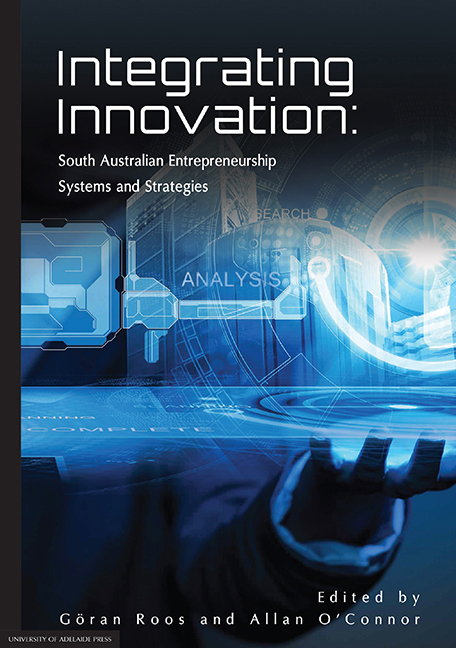Book contents
- Frontmatter
- Contents
- Chapter Abstracts
- Notes on Contributors
- Foreword
- Introduction
- Part 1 Regional-level perspectives
- 2 Moving beyond policy path dependency: An approach to fostering innovation in South Australia
- 3 A patent perspective of South Australian innovation: An indicator within the regional innovation system story
- 4 Innovation system symbiosis: The impact of virtual entrepreneurial teams on integrated innovation and regional innovation systems
- Part 2 Firm-level perspectives
- Part 3 Innovation management perspectives
- Conclusion
3 - A patent perspective of South Australian innovation: An indicator within the regional innovation system story
from Part 1 - Regional-level perspectives
Published online by Cambridge University Press: 05 February 2016
- Frontmatter
- Contents
- Chapter Abstracts
- Notes on Contributors
- Foreword
- Introduction
- Part 1 Regional-level perspectives
- 2 Moving beyond policy path dependency: An approach to fostering innovation in South Australia
- 3 A patent perspective of South Australian innovation: An indicator within the regional innovation system story
- 4 Innovation system symbiosis: The impact of virtual entrepreneurial teams on integrated innovation and regional innovation systems
- Part 2 Firm-level perspectives
- Part 3 Innovation management perspectives
- Conclusion
Summary
Introduction
We explore innovation performance in the context of measuring and analysing patent data within the Australian state of South Australia [SA]. However, we discuss and identify the use of patent data to measure innovation performance and the underlying assumptions and any limitations of such an approach in greater detail in this chapter.
Notwithstanding that it has been possible to suggest certain conclusions concerning that state's innovation trajectory from the patent data, integral to this exploration are the economic, regulatory and constitutional features that affect and define the nation of Australia and its states. For the purpose of this research, we launch from a discussion on SA patent activity to discuss the state's regional innovation system [RIS]. The RIS has typically been examined and defined in terms of a nation state. Uniquely, this research exploration brings together the two elements of examining an innovation system unit that is smaller than a nation state — in this case a state in Australia — and linking that with an analysis of that state's innovation performance.
Background
In relation to innovation performance, as assessed through patent data, this chapter specifically discusses the application of a particular approach to selecting the type of ‘patent families'. In this case we have chosen the Derwent World Patent Index [DWPI] of families (Thomson Reuters, 2012). The analysis included activity timelines (including ‘family’ expansion rate); a geographical analysis (source of innovation; destination of innovation); patent grant success rates; entity analysis (sector, portfolio size, number of inventions, entity citations); patents held by individuals; and the same analysis against the dimension of technical categories (such as pharmaceuticals, and agriculture and food), and academic intellectual property.
There is a significant body of research concerning innovation performance, and the particular role of patents as a metric. That research illustrates the strengths, weaknesses and limitations of such an approach. More broadly for example, Hagedoorn and Cloodt (2003) strongly advocate the merits of innovation performance being assessed using multiple indicators, and an example of that approach being applied is Dutta and Benavente's (2011) Global Innovation Index [GII], where patent data is only one of the inputs.
- Type
- Chapter
- Information
- Integrating InnovationSouth Australian Entrepreneurship Systems and Strategies, pp. 63 - 90Publisher: The University of Adelaide PressPrint publication year: 2015



